Lab 9 - Platyhelminthes and Nematoda
1/53
There's no tags or description
Looks like no tags are added yet.
Name | Mastery | Learn | Test | Matching | Spaced |
|---|
No study sessions yet.
54 Terms
Define Auricle:
chemosensory organs that detect dissolved chemicals
Define Pharynx:
tubular, muscular extension of gastrovascular cavity used for ingesting food
Define Acoelomate:
animals whose central space is filled with tissue; lacking a body cavity
Define Monoecious
organism that contains both male and female reproductive structures
List several features of planaria that suggest adaptation to a free-living lifestyle
Cephalization and sensory structures such as eyespots and auricles; reduced cuticle, more body space devoted to digestion and less to reproduction; lack of hooks, suckers, or other structures for attaching to host
Why do you suppose the pharynx is centrally located on the body, as opposed to being located at the anterior end of the animal?
Its central location in the body permits a uniform delivery of nutrients to all portions of the body—a necessary consequence of not having a circulatory system to transport nutrients from the digestive system throughout the body
Why is the gastrovascular cavity so extensively branched?
Extensive branching increases the digestive surface area of the gastrovascular cavity and thus increases the efficiency of the digestive process and the delivery of nutrients to the surrounding cells.
Flatworms were the first organisms to evolve specialized cells for excretion (flame cells). What specific purpose does an excretory system serve?
It rids the body of cellular wastes and plays a significant role in osmoregulation by concentrating toxic metabolic by-products and channeling them out of the body, while conserving water
List several anatomical and behavioral features of trematodes that suggest adaptation to a parasitic lifestyle.
Anatomical:
Monoecious
Extensive Rep Sys
Reduced Digestive Sys
Cuticle
Suckers for attachment
Lack of Sensory Structures
Behavioral:
Ability to self-fertilize
Huge Reproductive Potential
Absorb body fluids from Host
Resist Digestion by Host Enzymes
Which organs occupy the majority of the body space of the fluke? Explain
Rep Organs. Internal parasites absorb predigested nutrients and rely on diffusion for gas exchange and waste, so they lack complex organ systems. Low mating chances and offspring survival drive them to devote most of their body to reproduction.
Is the digestive system of flukes complete or incomplete?
Incomplete
What are the two intermediate larval stages in the life cycle of flukes?
Cercaria and Miracaidium
What defensive provision do flues possess for protection against the digestive enzymes of their hosts?
The cuticle, which is resistant to the digestive enzymes of its host
Describe the changes that occur in tapeworm proglottids as they mature
As tapeworm proglottids mature, they are shifted toward the rear of the body and gradually increase in size. Male first, female next.
Why is there an entire reproductive system in each proglottid?
allows each proglottid to reproduce independently and maximizes the overall reproductive output of the tapeworm
Tapeworms have been shaped by evolution for one purpose – reproduction. Describe how their body plan is set up to maximize their efficiency for obtaining nutrition and translating this energy into reproductive output
Their reduced organ systems leave more space for reproduction. Each proglottid acts as an independent reproductive unit, capable of self-fertilization and producing thousands of eggs. Mature proglottids detach and exit with feces, while the hardy eggs survive extreme conditions until development is possible.
Are the paths of flatworms straight or meandering? Explain why.
Meandering because in absence of a stimulus, they move forward in a winding indirect manner.
Does the path of the flatworms change after adding the egg yolk?
They typically move towards it.
What sensory structures do the flatworms use to detect the presence of egg yolk?
Auricles
What response does the animal exhibit (to light)? Why? (flatworms)
They quickly recoil and attempt to avoid the bright light, because planaria typically show a systematic aversion to bright light.
How does it react (to light from the side)? Why? (Flatworms)
Again, they move away from the light because of their aversion to bright light
What conclusions can you make about their response to bright light?
Planaria attempt to avoid bright light caused by direct illumination
From your data on direct illumination where would you predict that the animals will aggregate in such a dish, and why? (Flatworms)
On the dark, shaded portion of the dish, because previous observations suggest that planaria show an aversion to brightly illuminated areas
Would you expect headless flatworms to respond differently? Why?
Headless flatworms would not be able to distinguish light areas from dark areas and should be randomly distributed throughout both sides of the dish.
Can you detect the rhythmic beating of cilia on each of the two halves of the corona? Do the cilia on the two halves beat in the same direction, or opposite directions?
Yes, rhythmic beating of the cilia is observable. The cilia on the two halves beat in opposite directions

Corona with cilia on head
P. Rotifera
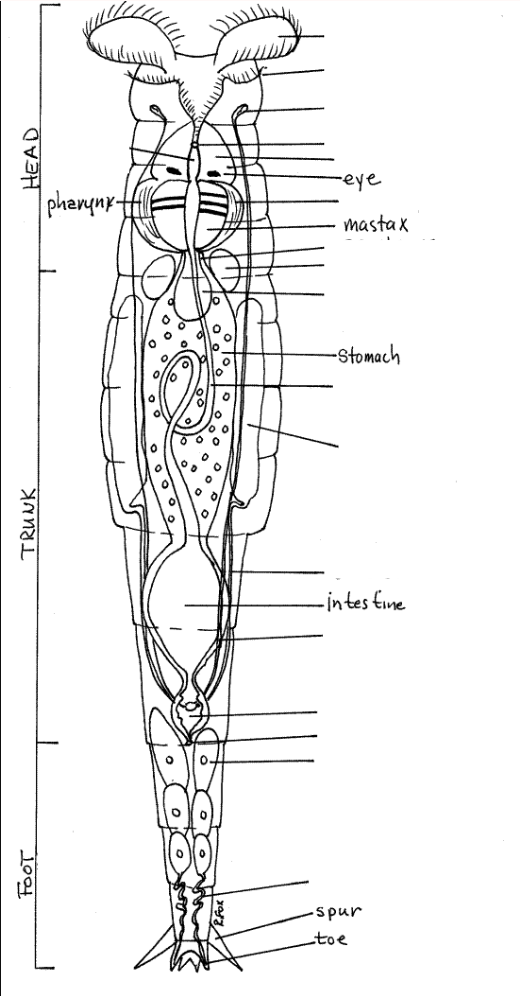



what is A?
Triradiate lips around mouth.
List two external differences between male and female nematodes.
Males will generally be (1) smaller, (2) thinner, and (3) have a curved posterior end bearing small spicules.
Is the intestine surrounded by an outer layer of muscle? (Nematoda)
No
Why do you suppose the digestive system of nematodes is rather unspecialized?
Because the organic products that nematodes ingest require little additional digestion to access their nutrients.
Do nematodes fit the pattern typical of parasites, in that a large portion of their body cavity is devoted to reproductive structures?
Yes
Through what structures are male gametes released? (Nematoda)
Ejaculatory duct through anus (or cloaca)
Through which structure are females’ fertilized eggs released?
Genital pore
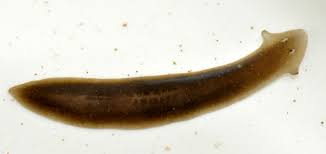
Identify!!!
Phylum Platyhelminthes. Class Turbellaria. Dugesia.
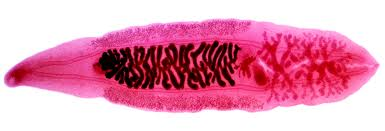
Identify!!!
Phylum Platyhelminthes. Class Trematoda. Clonorchis.
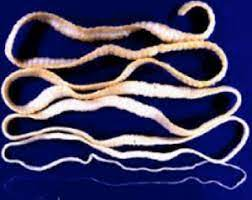
Identify!!!
Phylum Platyhelminthes. Class Cestoda. Taenia.
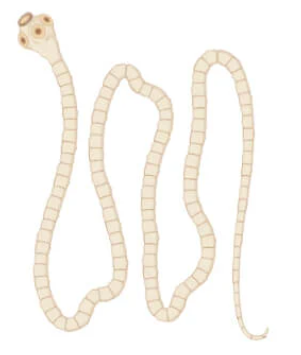

Identify!!!
Phylum Nematoda. Ascaris
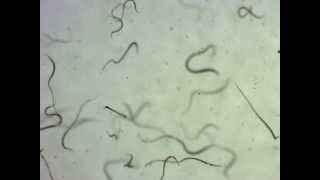
Identify!!! They move in Thrashing motions.
Phylum Nematoda. Turbatrix.

Identify!!!
Phylum Rotifera. Philodina.
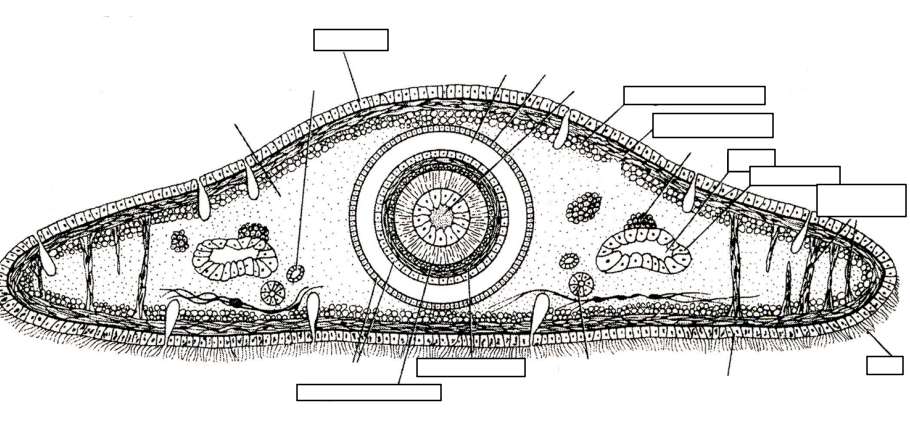
Label.
Dugesia c.s.
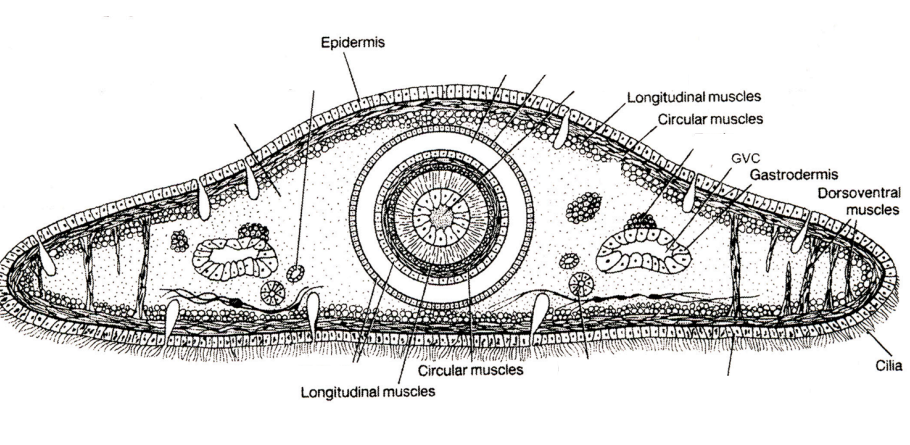
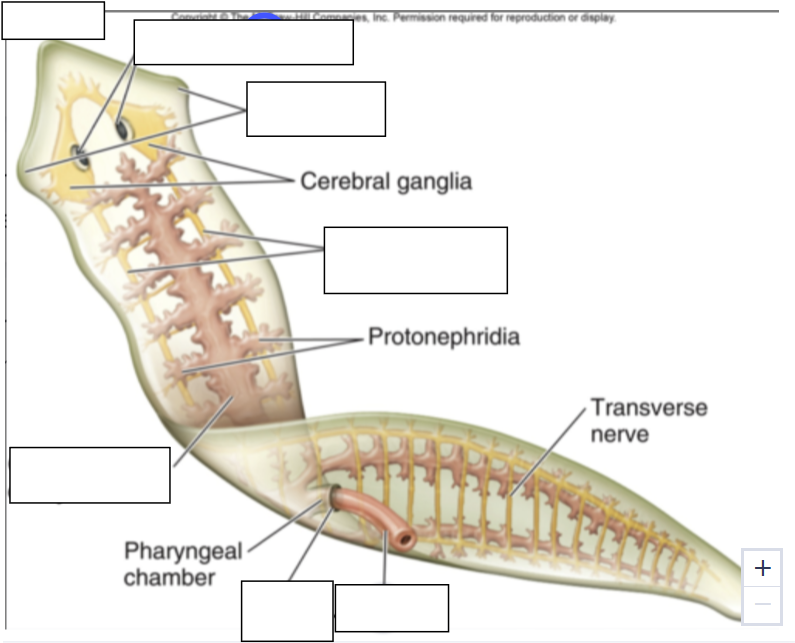
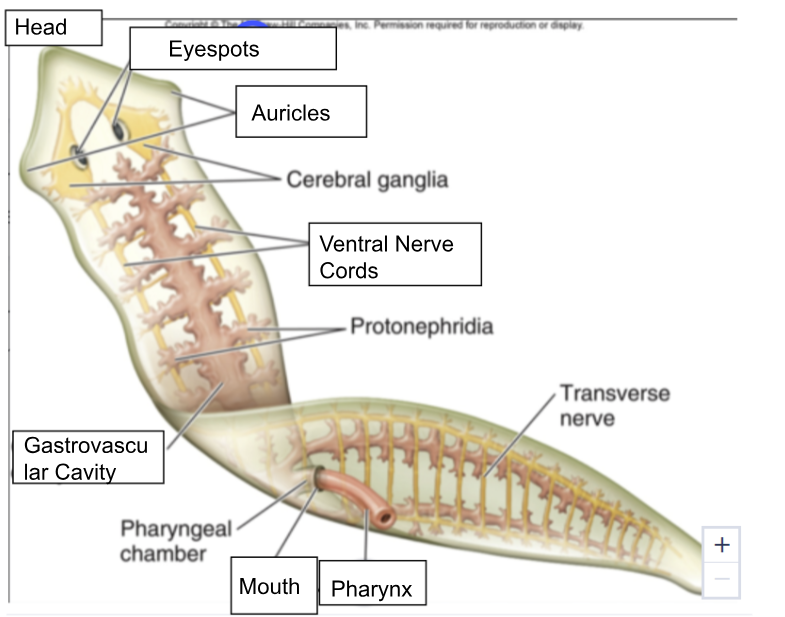
We can find flame cells in …
Dugesia. Class Turbellia. Phylum Platyhelminthes.
excretory and osmoregulatory cells that function like kidneys for the flatworm
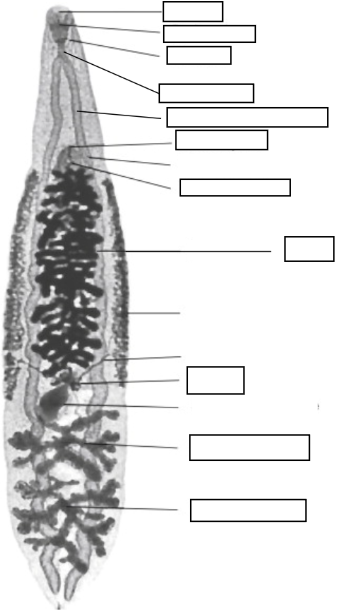
Label and Name
Clonorchis. Class Trematoda. Phylum Platyhelminthes.
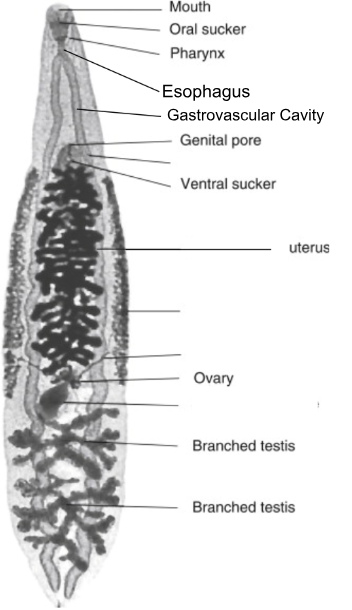

Label and Name
Phylum Platyhelminthes. Class Cestoda. Taenia.
Strobila - segments. Gravid proglottid - final egg filled segments.

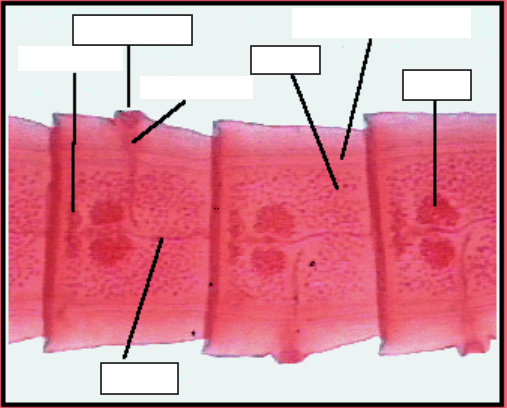
Label and Name
Phylum Platyhelminthes. Class Cestoda. Taenia.
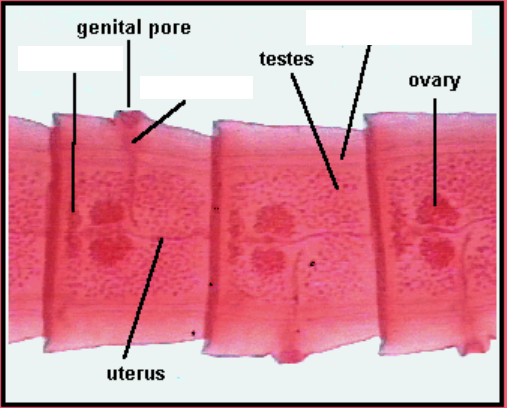

Label and Name
Phylum Nematoda. Ascaris
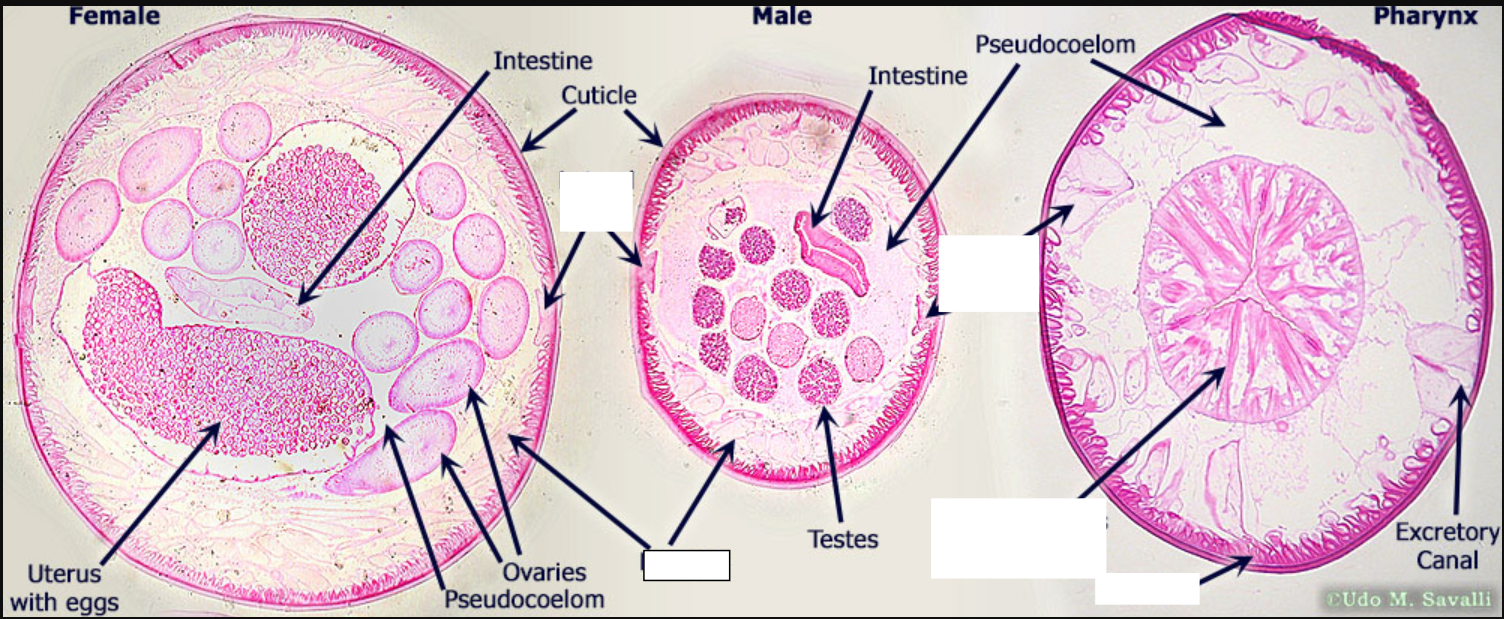
Label and Name
Phylum Nematoda. Ascaris
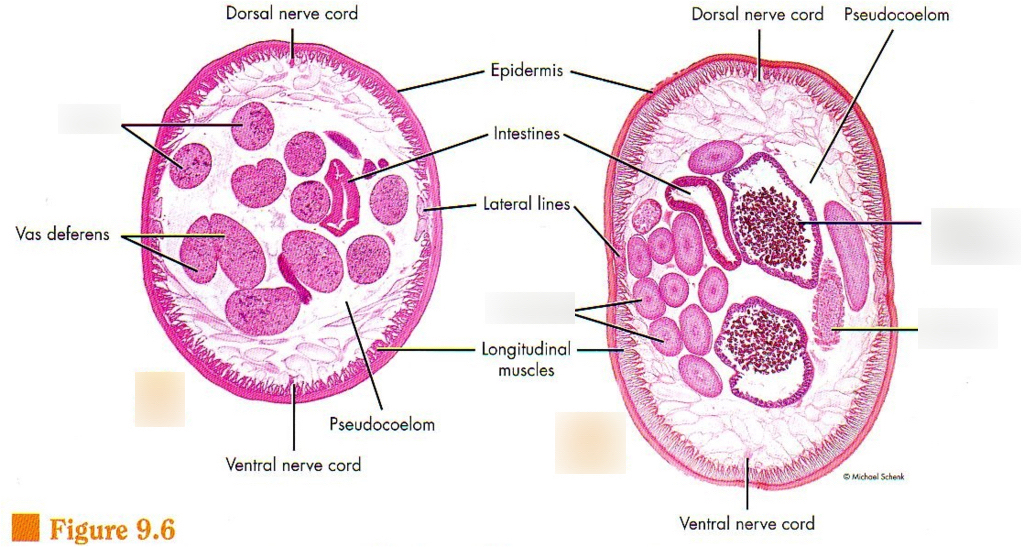
Label and Name
Phylum Nematoda. Ascaris
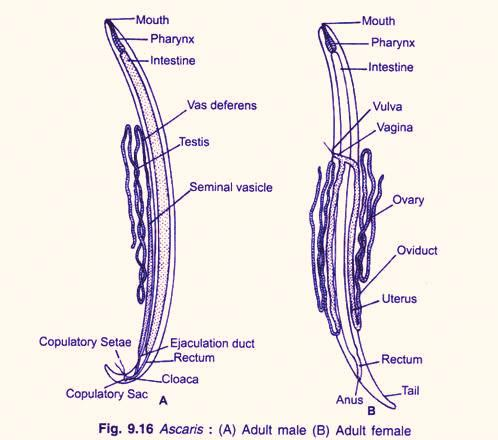
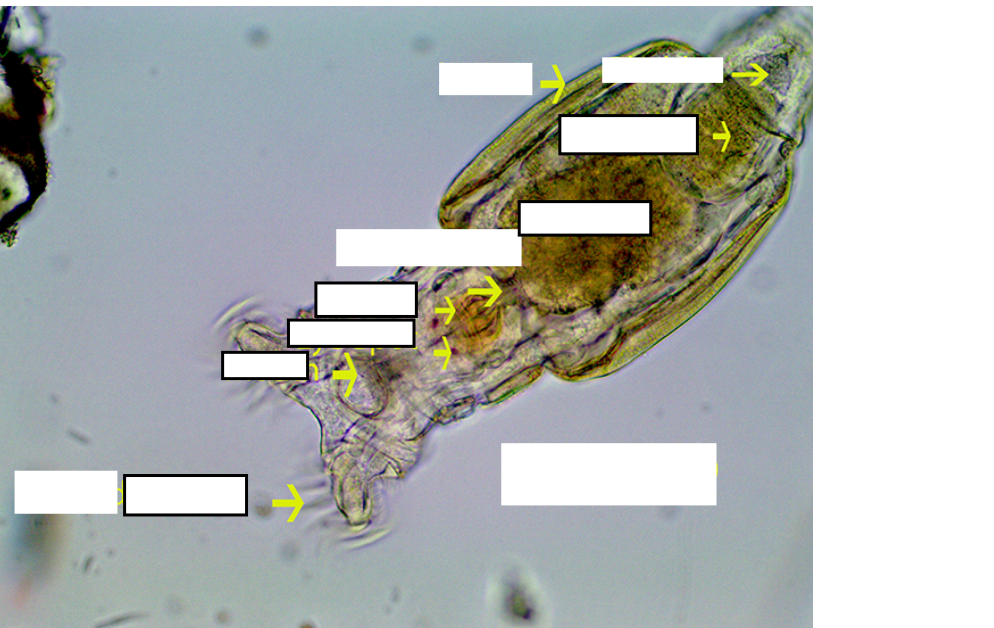
Label and Name
Phylum Rotifera. Philodina
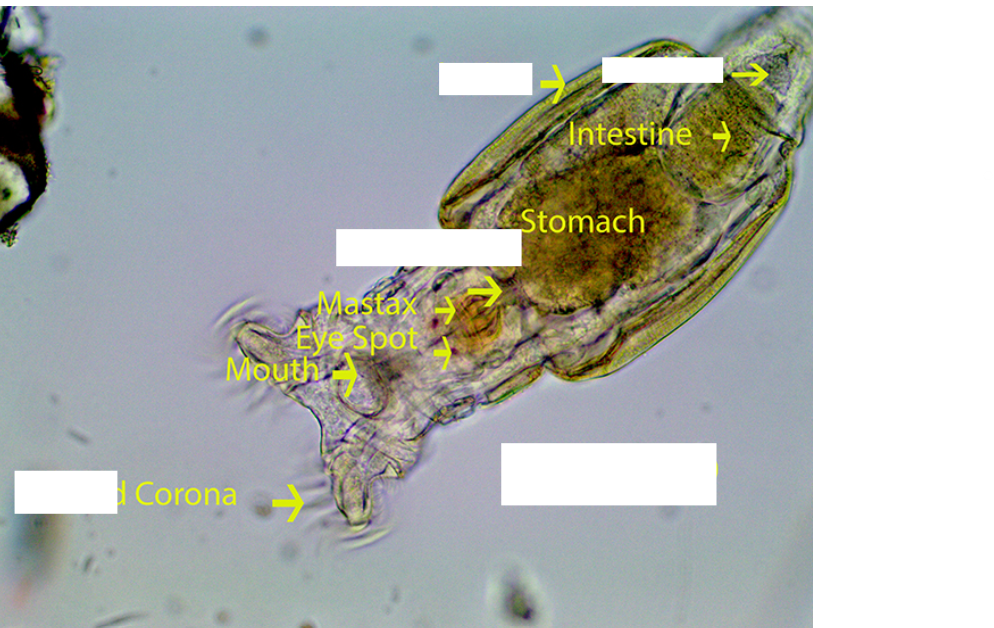
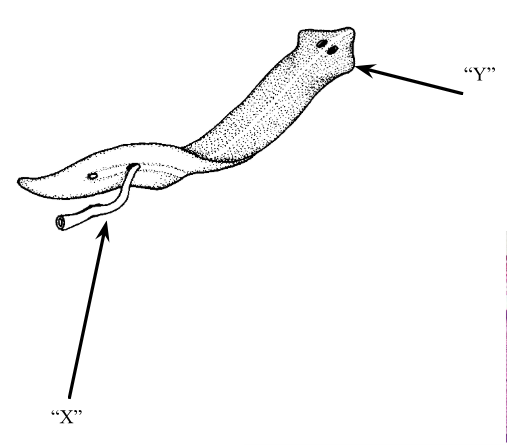
Label X and Y. What is the function of Y? What is this organism?
X - Pharynx
Y - Auricle
Chemoreception.
Dugesia. Phylum Platyhelminthes. Class Turbellaria.
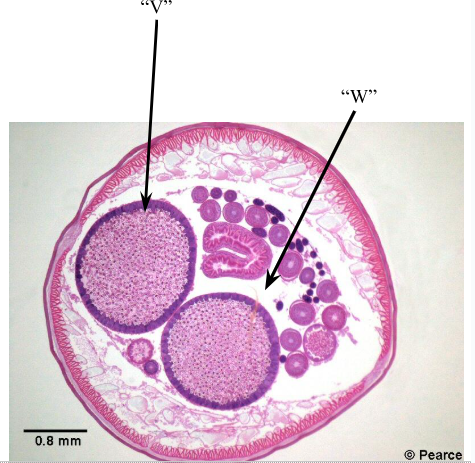
Identify structure “V”. Name the space at “W”. Name this animal.
V - Uterus
W - Pseudocoel
Phylum Nematoda. Class Cestoda. Ascaris c.s.
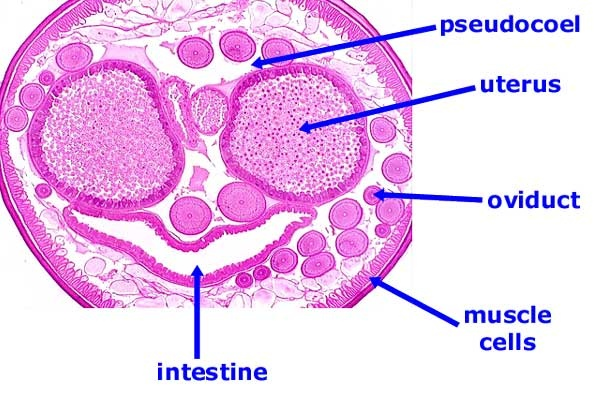
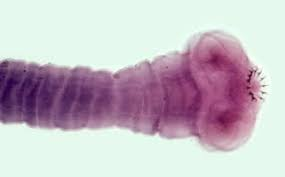
What is the body region shown?
Scolex.
The wheel-like organ bearing cilia at the front end is the
Corona